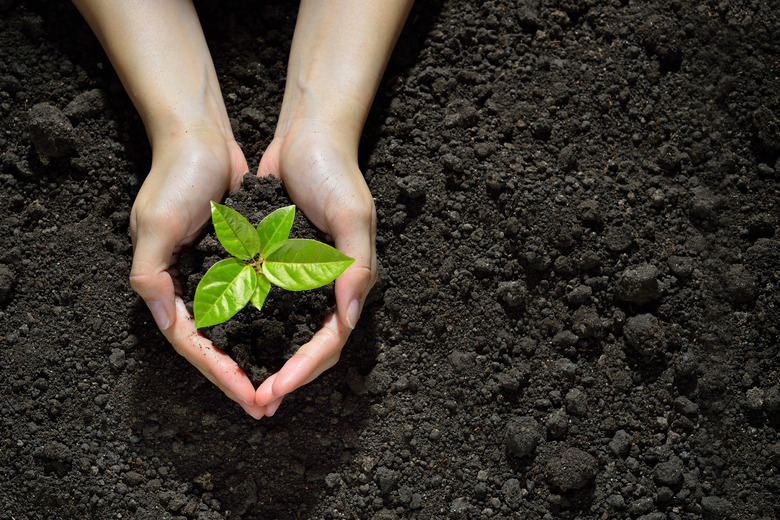Cellular Respiration In Plants
Every living thing (organism) in the world gets the energy it needs to survive from a chemical reaction called respiration. Plant cells respire the same way animal cells do, but respiration is only one part of the process. To survive, plants also need another chemical reaction called photosynthesis. While both plants and animals carry out cellular respiration, only plants conduct photosynthesis to make their own food.
TL;DR (Too Long; Didn't Read)
Cellular respiration is a chemical reaction plants need to get energy from glucose. Respiration uses glucose and oxygen to produce carbon dioxide and water and release energy.
Photosynthesis in Plants
Photosynthesis in Plants
Plants make their own food by photosynthesis. During photosynthesis a plant takes in water, carbon dioxide and light energy, and gives out glucose and oxygen. It takes light from the sun, carbon and oxygen atoms from the air and hydrogen from water to make energy molecules called ATP, which then build glucose molecules. The oxygen released by photosynthesis comes from the water a plant absorbs. Every water molecule is made of two hydrogen atoms and one oxygen atom, but only the hydrogen atoms are required. The oxygen atoms are released back into the air. Plants can only photosynthesize when they have light.
Process of Respiration
Process of Respiration
The glucose made in photosynthesis travels around the plant as soluble sugars and gives energy to the plant's cells during respiration. The first stage of respiration is glycolysis, which splits the glucose molecule into two smaller molecules called pyruvate, and expels a small amount of ATP energy. This stage (anaerobic respiration) does not need oxygen. In the second stage, the pyruvate molecules are reorganized and fused over again in a cycle. While the molecules are being reorganized, carbon dioxide is formed and electrons are removed and placed into an electron transport system which (like in photosynthesis) produces a lot of ATP for the plant to use for growth and reproduction. This stage (aerobic respiration) does need oxygen.
Outcome of Respiration
Outcome of Respiration
The outcome of cellular respiration is that the plant takes in glucose and oxygen, gives out carbon dioxide and water and releases energy. Plants respire at all times of the day and night because their cells need a constant energy source to stay alive. As well as being used by the plant to release energy via respiration, the glucose produced during photosynthesis is changed into starch, fats and oils for storage and used to make cellulose to grow and regenerate cell walls and proteins.
Cite This Article
MLA
Gillespie, Claire. "Cellular Respiration In Plants" sciencing.com, https://www.sciencing.com/cellular-respiration-plants-6513740/. 24 April 2018.
APA
Gillespie, Claire. (2018, April 24). Cellular Respiration In Plants. sciencing.com. Retrieved from https://www.sciencing.com/cellular-respiration-plants-6513740/
Chicago
Gillespie, Claire. Cellular Respiration In Plants last modified August 30, 2022. https://www.sciencing.com/cellular-respiration-plants-6513740/
